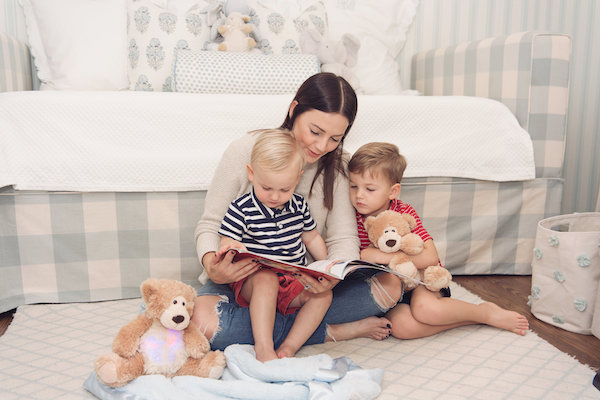
October was National Indoor Air Quality Month and as a mother of a child who suffers from allergies I was intrigued when 3M’s Filtrete™ Brand reached out to me about their indoor air quality campaign. Many people think of outdoor air pollution when they think about air quality. However, most people don’t realize that indoor levels of pollutants can be 2 to 5 times higher than outdoor levels.
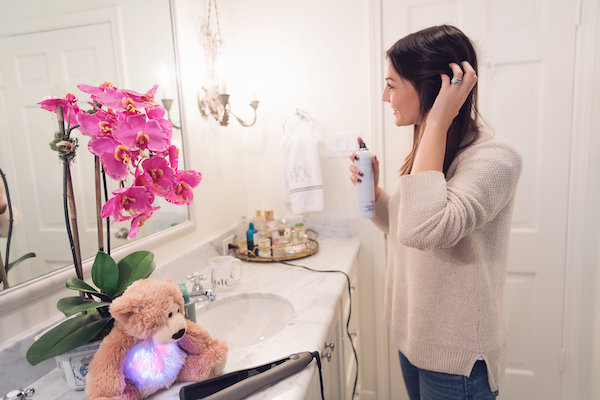

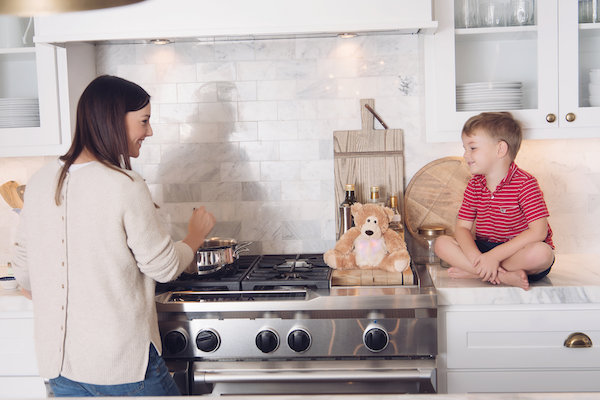
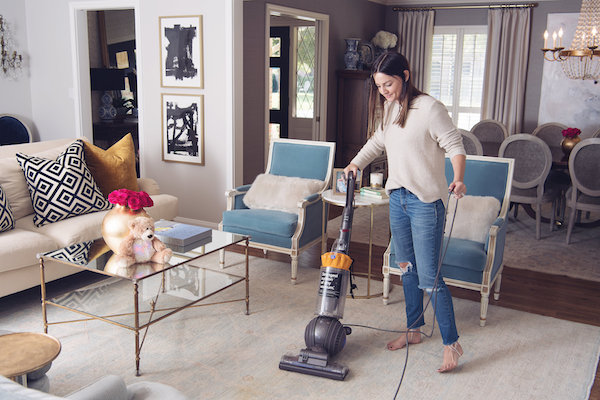

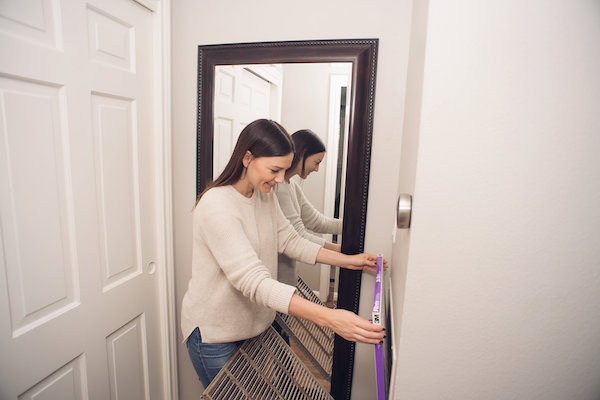

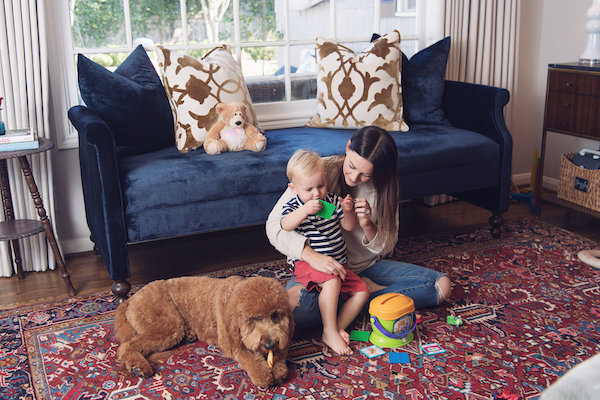
Photographed by Kate Robinson
For demonstration purposes, and to make indoor air quality more easily understood, the Filtrete Brand team brought over their special teddy bear prototype that measures air quality and displays it on its tummy. The bear contains an air sensor that measures particulate matter concentrations of some of the smallest particles in the air. The bear’s tummy shows blue lights when air quality is good, but the lights change to red when the bear senses more particles in the air and the air quality decreases. We tested the air quality in different rooms in our home and put it to the challenge by doing normal household activities that are known to stir up dust and particles – like vacuuming the rugs, playing with Rosie and cooking on the gas stove top. It was alarming to see the bear’s tummy turn red, but I was quickly comforted as the color would settle back down to blue.
Even well-maintained and ventilated homes may have dust, pollen, mold spores, bacteria, and other viruses in its air. Pets, cooking and everyday cleaning activities like vacuuming and dusting can also affect the air quality in our homes, kicking up particles we can’t see into the air we breathe.
Choosing the right filter is one simple way to help improve your home’s indoor air quality. While you can’t always see unwanted airborne particles, Filtrete™ Healthy Living filters use exclusive 3-in- 1 technology from 3M to pull in and trap unwanted particles, while letting cleaner air flow through. Filtrete™ Healthy Living Filters capture more dust, mold spores, pet dander and particles that carry viruses and bacteria than fiberglass filers. I was surprised to learn that the filter we were using before this project was the least effective on the scale of capturing the really small particles like bacteria and viruses.
The filter we are now using (found here) is certified by Asthma and Allergy Foundation of America. Filtrete™ Healthy Living Filters (MPR 1500 and above) are asthma & allergy friendly™ certified and support the overall concept of an allergen avoidance plan for people with asthma and allergies.
After all the construction we had done in our home, we had professional cleaners come out to clean our air vents. They said it was so bad and looked like it may have never been done before (our home was built in the 60’s)! I can’t believe we went through all this trouble, but weren’t even using the best air filters in our home, something so simple. I am so grateful for everything I learned working with Filtrete Brand on this project.
With Americans spending, on average, nearly 90% of their time indoors, it’s never been a better time to start caring about your indoor air quality. More than just an issue for those with allergies, asthma and other respiratory issues, indoor air quality is an issue that affects us all.
Common Causes and Tips to Improve Indoor Air Quality
It is important to understand what activities effect indoor air quality, and steps people can take to improve the air inside of their homes.
Common causes:
- Pets slough off dander, which accumulates on household surfaces and in the air.
- Everyday cleaning activities like vacuuming and dusting actually kick particles back up into the air.
- Burning scented candles may mask odors but also release small soot particles into the air.
- Cooking.
- Fireplaces emit soot particles.
Tips for improving air quality:
- Check and change your air filter: High performing HVAC filters can capture unwanted airborne particles like dust, pollen, pet dander, smoke, and bacteria and viruses. The EPA recommends checking your home’s air filter monthly and changing it at least quarterly to help your home’s heating and cooling system run more efficiently.[1]
- Control humidity and dampness: Install and run exhaust fans in all bathrooms to reduce moisture, remove any mold growth in your home and fix all leaks from the roof to the basement.
- Avoid high VOC products: Some hair and nail products, cleaning supplies and art and hobby supplies have chemicals that impact air quality. Look for products marked “low VOCs” and only use them in a well-ventilated area.
- Ventilate your kitchen: Cooking is a big source of indoor air pollution, especially if you have a gas stove. Be sure to ventilate your kitchen stove or open windows and doors while cooking.
This post was created in collaboration with Filtrete Brand. Thank you for supporting the products and brands we love at HOUSE of HARPER!





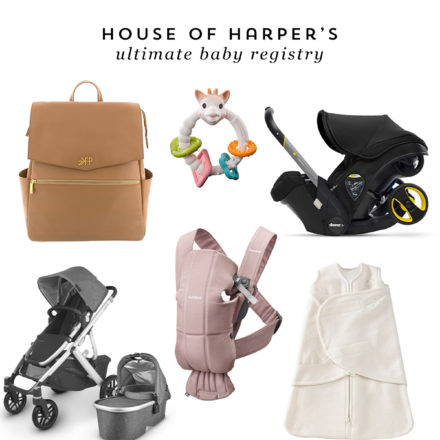




Oh my goodness. Talk about random. We got our air ducts cleaned to today and the company (Take Air Duct And Carpet Cleaning Specialist Llc) recommend Filtrate. Then I see your email from your blog… Taking it as a sign and getting Filtrate! Thanks!